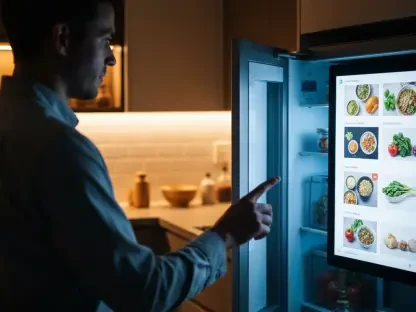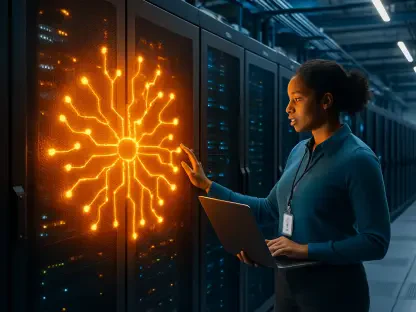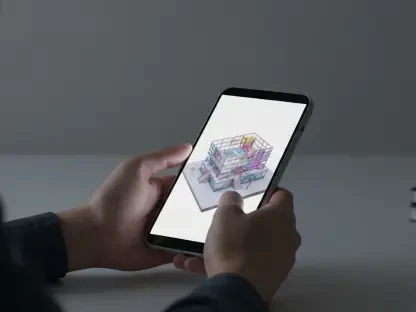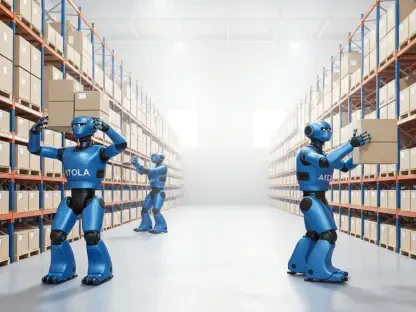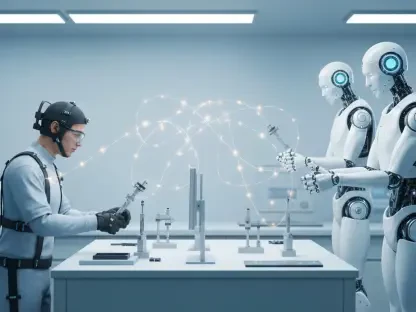Imagine a world where a simple hand gesture can command a robot to deliver a refreshing drink to your desk, all while you remain immersed in a virtual environment that seamlessly blends with the physical space around you, creating an experience that feels both magical and real. This is no longer a distant dream but a tangible reality being crafted through the integration of virtual reality (VR) and robotics. This groundbreaking technology is reshaping how humans interact with both digital and physical realms, offering unprecedented possibilities across industries. This review delves into the intricacies of VR-robotics integration, exploring its evolution, technical prowess, and transformative potential in everyday applications.
The convergence of VR and robotics marks a pivotal moment in technological advancement, bridging the gap between simulated experiences and real-world actions. By combining mixed reality headsets with robotic systems, this innovation allows users to manipulate physical objects through virtual interfaces effortlessly. The aim of this analysis is to provide a comprehensive understanding of the current state of this emerging field, highlighting its capabilities and the hurdles yet to be overcome.
Historical Context and Importance
The journey toward integrating VR with robotics has been fueled by significant strides in mixed reality hardware and automation technologies. Over recent years, starting from 2025, the focus has intensified on creating systems that enable fluid interactions between digital environments and tangible surroundings. This synergy is rooted in the desire to enhance user experiences by making technology an invisible facilitator of human needs, a concept gaining traction across the tech landscape.
This integration holds profound significance in redefining how individuals engage with their environments. From enabling remote collaboration to transforming educational methodologies, the potential applications are vast. It stands as a testament to the evolving relationship between humans and machines, promising to elevate accessibility and engagement in sectors previously limited by physical constraints.
Core Technologies Driving the Integration
Gesture-Based Interaction Methods
At the heart of VR-robotics integration lies the ability to interact using intuitive gesture-based controls. These techniques allow users to communicate intentions through natural hand movements, seamlessly manipulating objects in both virtual and physical spaces. Such methods eliminate the need for cumbersome controllers, fostering a more instinctive connection with the technology.
The performance of gesture-based interactions has shown remarkable promise in enhancing user immersion. By translating subtle motions into precise robotic actions, the system ensures that tasks like selecting and placing objects feel instantaneous. This approach not only simplifies complex operations but also sets a new standard for user-friendly design in mixed reality applications.
Advanced Visual Rendering with 3D Gaussian Splatting
Another cornerstone of this technology is the use of 3D Gaussian splatting, a sophisticated rendering technique that creates highly detailed digital replicas of physical environments. This method enables the system to mask elements like robots from the user’s view or overlay virtual components, such as animated characters, into the real world. The result is a cohesive blend of digital and physical spaces that heightens the sense of immersion.
Delving into the technical aspects, 3D Gaussian splatting offers robust performance in maintaining visual fidelity, even during dynamic interactions. However, the process of scanning and rendering spaces remains intricate and resource-intensive, posing challenges for scalability. Despite this, its role in crafting believable mixed reality experiences cannot be overstated, as it fundamentally enhances how users perceive and interact with their surroundings.
Latest Innovations and Emerging Trends
Recent advancements in VR-robotics integration have focused on refining user interfaces to ensure seamless operation. Breakthroughs in robotic responsiveness now allow for near-instantaneous execution of commands, making interactions feel more natural. These developments underscore a commitment to enhancing the fluidity of human-machine collaboration.
A notable trend shaping this field is the push toward making technology invisible to users. By concealing the mechanisms behind robotic actions and digital overlays, the experience mimics a magical ease, prioritizing user comfort over technical visibility. This shift reflects a broader industry movement toward intuitive design as a core principle.
Consumer expectations and industry demands are also steering the trajectory of this innovation. There is a growing insistence on systems that integrate effortlessly into daily routines, prompting developers to focus on accessibility and adaptability. As these priorities evolve, they are likely to drive further enhancements in how VR and robotics converge over the coming years.
Practical Applications Across Industries
The real-world utility of VR-robotics integration spans a diverse array of sectors, demonstrating its versatility. In remote collaboration, it enables professionals to interact with physical tools and objects across distances as if they were in the same location, revolutionizing workplace dynamics. This capability is particularly valuable in fields requiring precision and coordination.
In education, the technology offers immersive learning experiences by allowing students to engage with tangible materials through virtual interfaces. For instance, a biology lesson could involve dissecting a virtual specimen that feels real, thanks to robotic feedback. Similarly, in entertainment and gaming, it paves the way for storytelling that blends physical actions with digital narratives, creating deeply engaging experiences.
Specific demonstrations highlight the adaptability of this integration. Consider a scenario where a robot delivers an object to a user while a virtual overlay transforms the delivery into an animated sequence. Such examples illustrate how the technology can cater to both functional and creative needs, positioning it as a game-changer in multiple domains.
Challenges Hindering Widespread Adoption
Despite its potential, VR-robotics integration faces significant obstacles that limit its broader implementation. One primary challenge is the labor-intensive process of scanning and rendering physical environments for mixed reality use. This meticulous task requires substantial time and resources, creating a bottleneck for scaling the technology to larger audiences.
Technical and usability issues also pose hurdles, particularly in ensuring precise robotic actions that align perfectly with virtual commands. Any discrepancy can disrupt the user experience, breaking the illusion of seamlessness. Additionally, integrating high-fidelity visuals without latency remains a persistent concern for developers aiming to maintain immersion.
Ongoing research efforts are addressing these limitations with innovative solutions. Automating the scanning process using robots themselves is one promising avenue being explored, which could drastically reduce manual workload. As these challenges are tackled, the path toward mainstream adoption becomes clearer, though patience and persistence remain essential.
Future Prospects and Societal Impact
Looking ahead, the direction of VR-robotics integration points toward greater automation and efficiency in rendering processes. Anticipated advancements in user interface design are expected to further simplify interactions, making the technology accessible to a wider demographic. These improvements could redefine the benchmarks for mixed reality applications by the end of this decade.
The long-term societal implications are equally compelling, with VR and augmented reality poised to become normalized in daily life. Hybrid environments that blend physical and digital elements could transform spaces like homes and offices into interactive hubs. This shift promises to enhance how communities connect and operate within increasingly interconnected ecosystems.
Speculation on future breakthroughs suggests possibilities for even deeper integration, where the boundaries between virtual and real interactions become virtually indistinguishable. Such developments could democratize access to advanced tools, empowering individuals across various socioeconomic backgrounds to engage with cutting-edge technology in meaningful ways.
Reflecting on the Journey and Next Steps
Looking back, the exploration of VR-robotics integration revealed a fascinating fusion of digital immersion and physical action that captivated researchers and users alike. The technology demonstrated remarkable capabilities in creating intuitive experiences through gesture controls and advanced rendering, though it stumbled on challenges like time-consuming setup processes. Its application across diverse fields underscored a versatility that was both inspiring and practical.
Moving forward, the focus should pivot to streamlining the technical bottlenecks, particularly in automating environmental scanning to reduce labor demands. Collaborative efforts between academia and industry could accelerate solutions, ensuring that precision in robotic actions matches the seamlessness of virtual interfaces. Investing in user education will also be crucial to familiarize broader audiences with this innovation.
Ultimately, the path ahead involves fostering adaptability in design to meet evolving consumer needs. By prioritizing scalable and inclusive approaches, stakeholders can ensure that VR-robotics integration transcends niche applications to become a cornerstone of human-technology interaction. This commitment to progress will shape how society embraces a blended reality in the years that follow.


